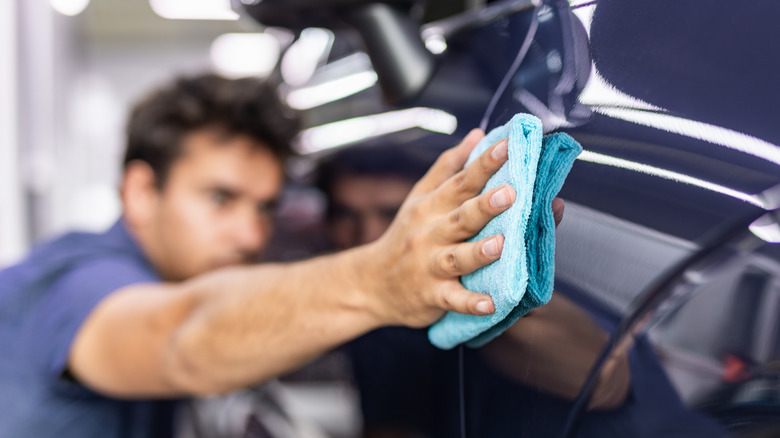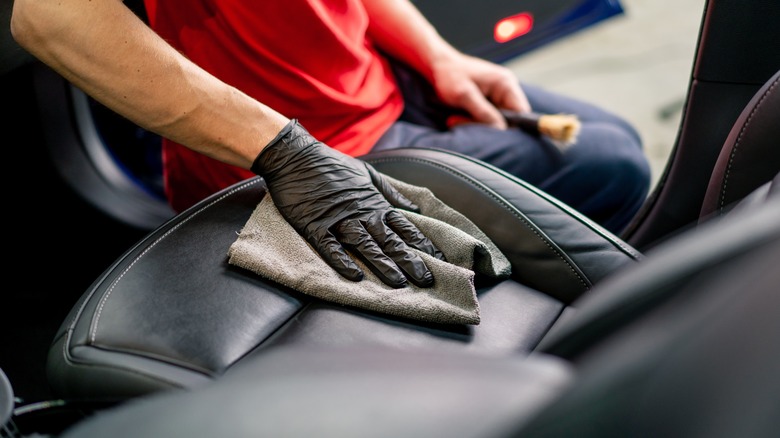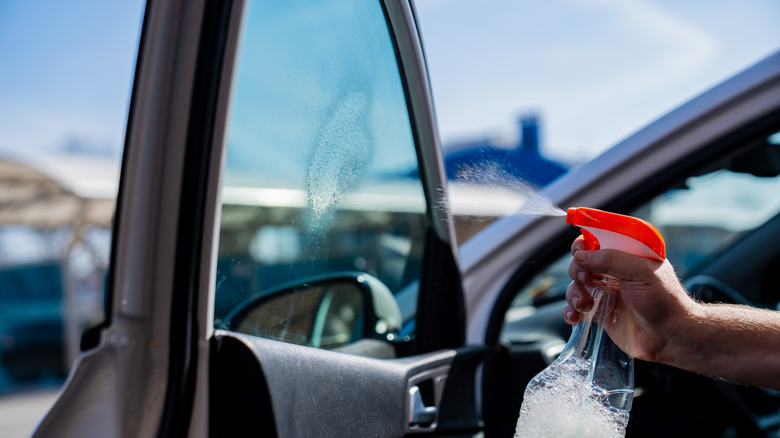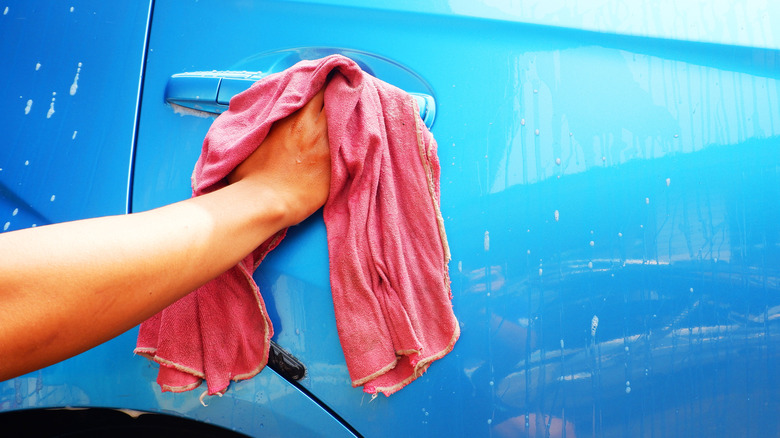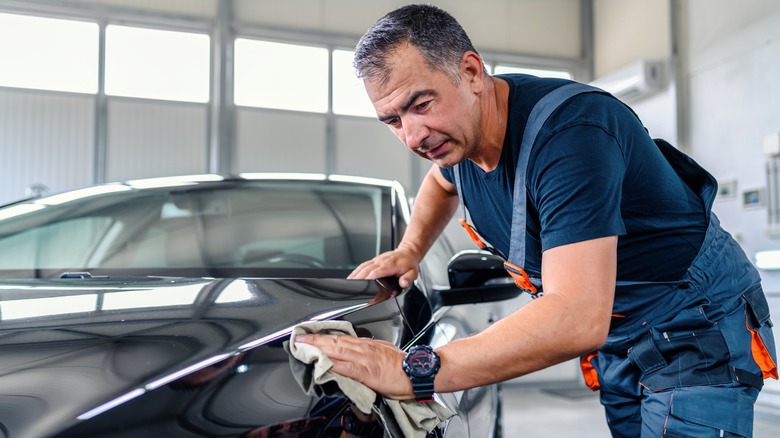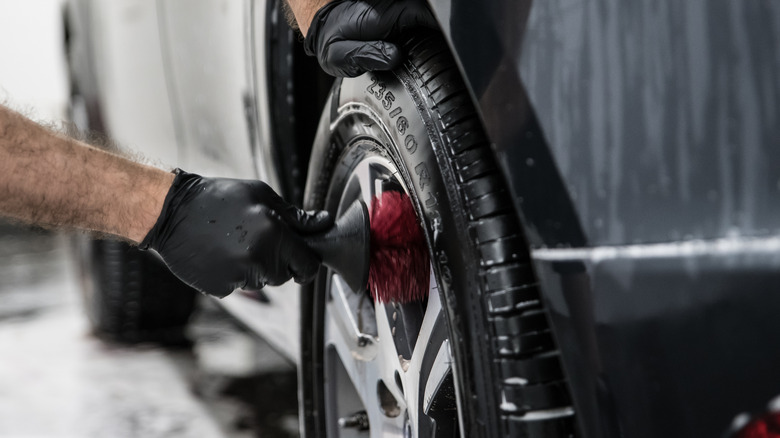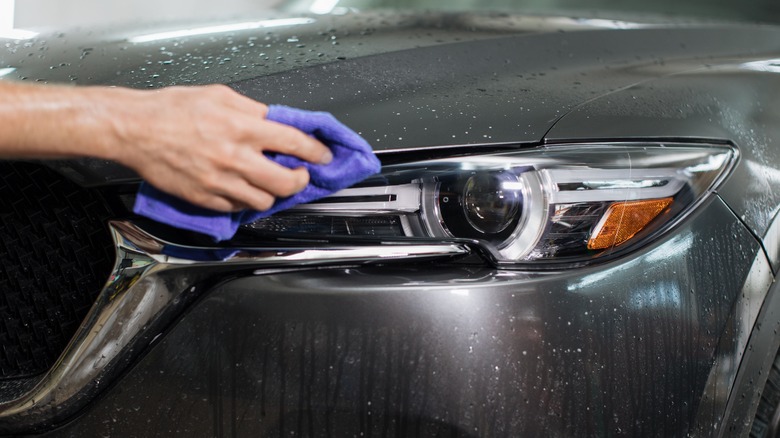6 Tips & Tricks For Detailing Your Vehicle Like A Pro
We may receive a commission on purchases made from links.
Washing a car or truck is a top priority for weekend warriors everywhere. But even as satisfying as it can be to cruise around town with your car glistening in the Sunday sun, some might argue that just washing your automobile is not enough, opting instead to go the extra yard and fully detail their vehicle.
If you're unfamiliar with the term, detailing a car essentially means deep cleaning the vehicle inside and out. That includes scrubbing, vacuuming, and polishing every nook and cranny on your car or truck with the goal of restoring them to the way they looked at the time of purchase. The catch is that detailing a car takes considerably longer than a traditional backyard car wash and requires tools you should keep in your garage.
Though it may take extra effort, detailing your car on a regular basis can keep the vehicle looking good and even increase its resale value on the used car market. If that sounds worthwhile, here are a few tips and tricks that can help anyone detail their car like a professional.
Detail the interior of your vehicle first
It's always a good idea to detail from the inside out, as that approach will allow all the interior surfaces to dry before it's time to drive, and it is arguably the more time-consuming part of the job. To detail an interior like a pro, start by taking a clean, damp microfiber towel to give the vehicle's door jams a good wipe down. A good vacuum will also come in handy when it's time to start cleaning the vehicle's floors and chairs.
Pro Tip: you'll want to vacuum the floors before cleaning anything else in the interior, as the process will likely kick up dust onto other surfaces. After vacuuming, use a cleaning agent on carpeted areas and any surface upholstered in fabric or leather, ensuring you're utilizing a cleaner approved for use on each surface. The floor mats should be removed for cleaning, and if you've got a good pressure washer standing by for the exterior wash, use it to give them a proper deep cleaning, too.
From there, start wiping down hard-surface areas like the dashboard, console, and steering wheel. If you want to get super serious about your detailing work, try using a small brush on the air and heating vents to remove dust build-up.
Pay particular attention to the edges of your windows
Properly detailing your vehicle's interior, of course, includes cleaning all the windows. You will want to use a streak-free window cleaner for this process, but you can also help reduce streaks by wiping down your windows in a shaded area free of direct sunlight.
You may also want to think about an area of a window that is often overlooked in the cleaning process, and that's the top edge of the glass. Those outer edges are easy to forget because they're only visible when the windows are down, so you'll want to lower all the windows and inspect each as you detail. If you see a line left on the edges of the windows where they seal with the door frame, run a lint-free towel moistened with window cleaner over them to remove the build-up of dirt.
If you want to go the extra mile in cleaning those edges, take the vacuum you used to clean the floors and use it to remove any dusty build-up from where the window seals. Yes, cleaning the edges of a car's windows might seem a little extra to some people, but paying attention to such details is the whole point of auto detailing.
Hand dry your car before detailing the exterior
It should go without saying, but a good car detailing job includes good exterior washing using the best automotive soap. That's particularly true if you want to top your detailing job off with a coat of polish. Before you polish your car, you want to ensure your vehicle is free of dirt and grime and completely dry, as most polishes are less effective on damp surfaces.
There are several ways to dry your freshly washed vehicle, including using a chamois cloth, a powered blower, or even straight-up air drying. While any of those drying options should get the job done, a clean, microfiber hand towel is one of the preferred methods for drying a vehicle after a wash.
A microfiber towel is the drying method used by many hand-wash car wash operations to dry vehicles post-wash. They do it that way because it's generally believed that microfiber hand towels are the fastest, most effective way to dry a car, helping to limit the number of streaks and water spots and prime the vehicle for a coat of wax.
Do not detail your vehicle in direct sunlight
We noted that you should clean your windows in a shaded area to help reduce the risk of leaving behind streaks. While it is commonplace for car owners to wash and detail their vehicles in the cozy confines of their sunlit driveway, washing your car in direct sunlight is a common mistake that will likely result in streaking and water-spotting even if you use a microfiber cloth in the drying process. Yes, auto detailing should also be performed in the shade to allow any polishes and cleaning solutions you use to dry free of cracks, streaks, or spotting.
Detailing your car in the shade may be challenging as many driveways don't provide the necessary coverage, and not everyone has a garage handy. Likewise, covered public car washes generally do not allow patrons the time it would take to detail a vehicle in one of their wash or vacuum bays. If you have a garage, the simple solution may be to wash your vehicle in the driveway, then dry and detail it inside the garage. While finding a shaded area to detail your car may require extra effort, doing so can help ensure it has a legit, like-new shine when you're finished.
Spend a little extra time detailing your wheels
It seems obvious, but detailing your wheels and tires goes a long way in achieving a polished look. The first step in achieving that look is to dedicate extra time to scrubbing your tires and wheels with a soft-bristle brush or hand mitt, then wait until they are dry before you set about the detailing work.
Traditional wisdom dictates that you should touch up wheels and tires after you've cleaned, dried, and detailed the rest of your vehicle, as working top to bottom can help ensure you don't miss any dirt and grime that trickled down along the way. Once your tires are primed, apply a tire polish or dressing of your choosing to the rubber to help protect them from the elements, massaging the compound into the surface with a sponge or microfiber towel.
Such dressings will typically give your tires a glossy shine once they dry, though it's important to avoid using products containing silicone as that may affect a tire's grip on wet roads. After you've dressed your tires, take a separate microfiber towel and run it over the wheel, removing any excess dust or tire dressing that may have come into contact with it. For extra shine on aluminum or alloy wheels, apply a light coat of wheel wax.
Touching up your headlights can raise your detailing game
Once you've fully detailed the interior and exterior of your vehicle, it should be shining like the day you drove it home. However, if you're willing to go the extra mile, polishing the car's headlight covers can take your auto detailing game to the next level.
Dirty headlight covers are likely not something many non-professionals think about when detailing a vehicle, and we'd wager even some professionals overlook the issue. That is partially because you should clean the headlights when you wash your car. However, given their location at the front of the vehicle, headlights can build up layers of dirt and grime that even a good wipe-down may not be able to remove.
As such, polishing your headlights to a crystal clear sheen will give your car a fresh, polished look and even help ensure your vehicle's lamps properly light the road at night. Just FYI — you can actually touch up your headlights with WD-40 or even a mixture of vinegar and baking soda if you like. However, a restoration kit can also be helpful in cleaning and polishing your headlights, like this one, for about $10 through Amazon. Lastly, if you want to take your detail job the extra mile, here's a step-by-step guide to cleaning your car's engine bay.
